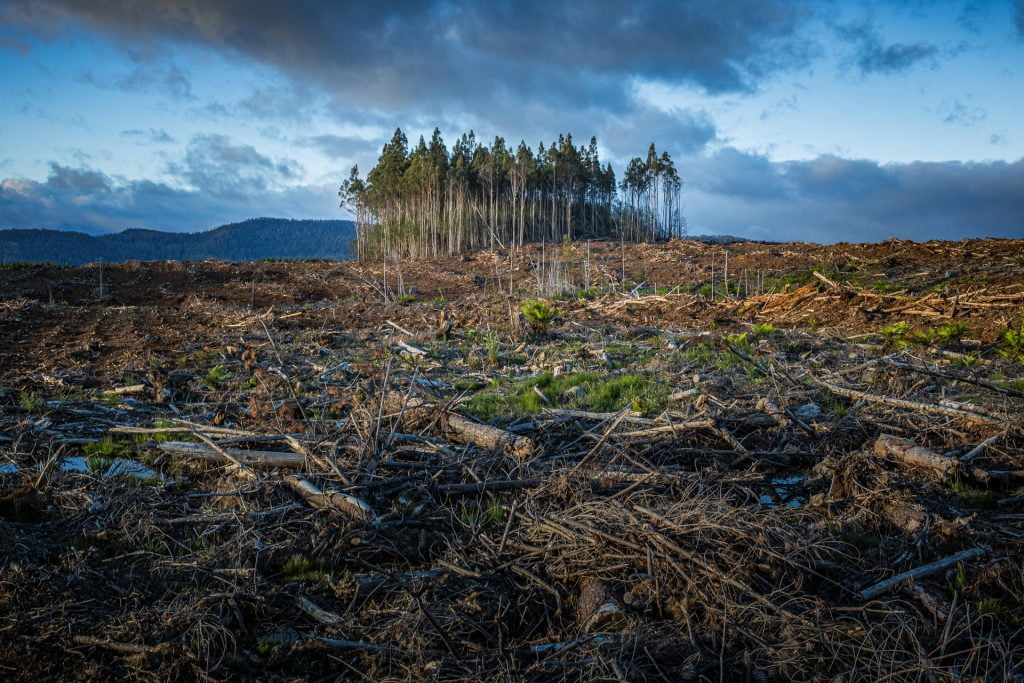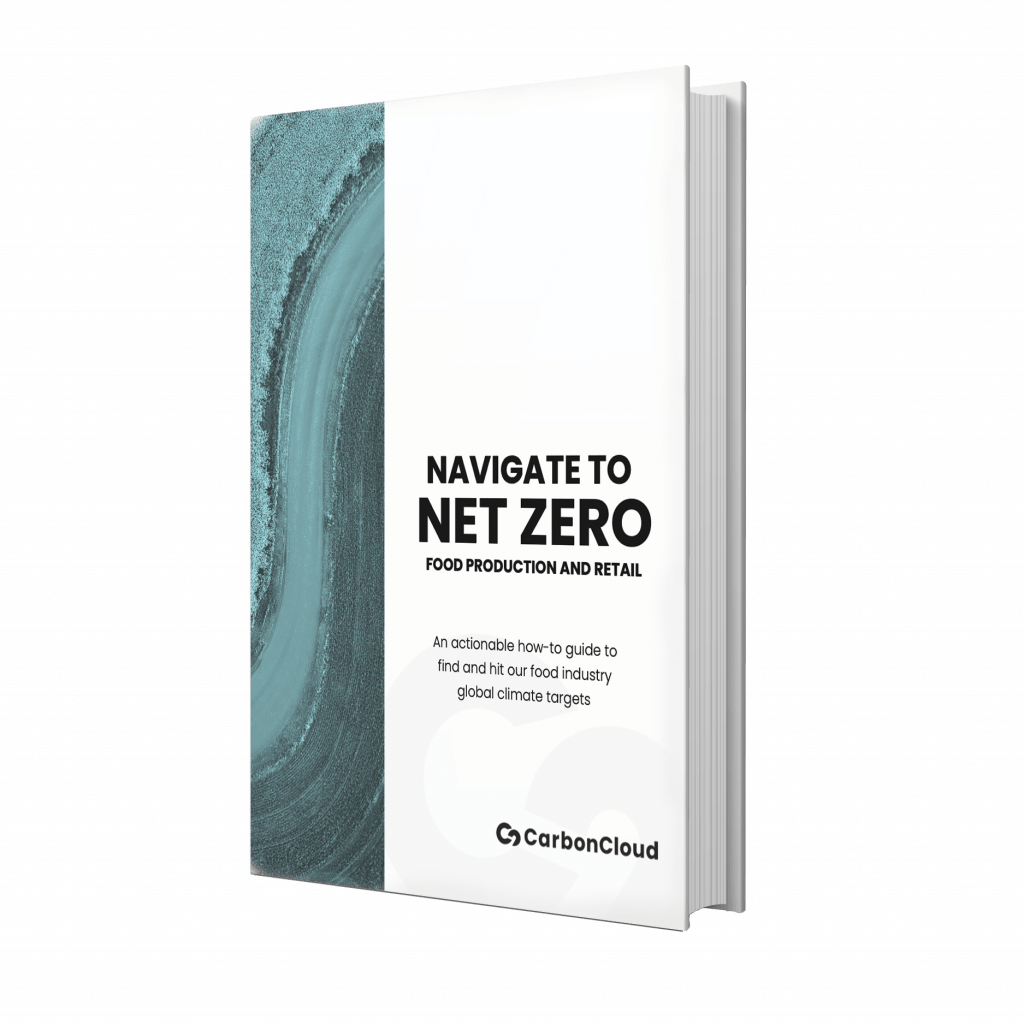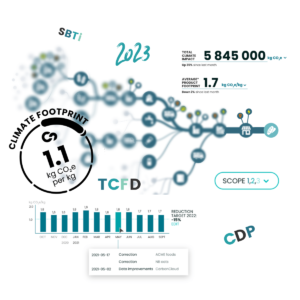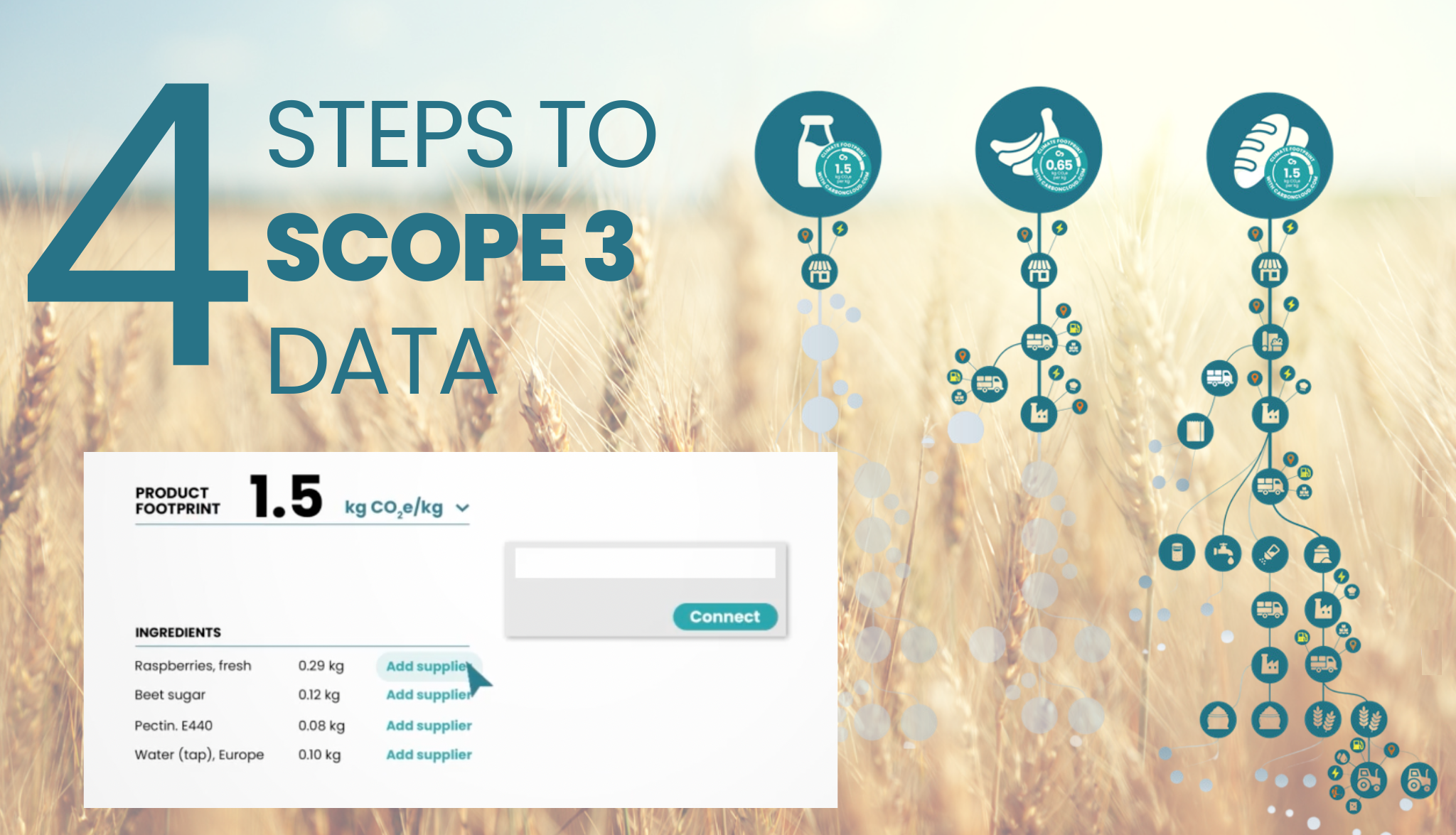Can the food sector reach Net-Zero?
Net-zero seems to be the ultimate goal for the food sector – and the whole world for that matter. Pledges, commitments, targets live proudly on corporate websites and net-zero is now a long-term KPI for most companies and supply chains. However, not all industries are created equal and food is on the underprivileged side. Do you know what the term really means? Do you instantly see how it applies to your supply chain? If you don’t have clear answers, you are the majority and you are in the right place. Let’s start digging.
What does net zero mean?
The term ‘net zero’ applies to the greenhouse gas emissions from human-related activities. ‘Net zero’ implies that there are emissions of greenhouse gases and an uptake. The sum between the two is zero: What goes in, comes out.
Let’s turn the spotlight on this implication profoundly tied to the term ‘net zero’ – one that we rarely think about when we use it: Something goes out. This implies that setting a generic ‘net-zero’ target does not necessarily mean reducing greenhouse gas emissions – but it necessarily means that the emissions that still go out will be compensated by offsets. For example, a fossil fuel corporation may produce 10 gigatons of CO2e a year, but if it offsets all of it, the account is ‘net-zero’. This corporation has the same net result as another that has a climate strategy roadmap to reduce their emissions down to zero. Nothing goes in, nothing comes out.
This is where the term itself gets problematic:
- a) It does not necessarily incentivize the sole way humanity can employ to solve climate change: Emission reductions. Emission reductions fall on the good intentions of the corporation to reach their reduction target in the most effective way unless stated otherwise in the different climate schemes. For example, SBTi mention within their response on carbon removal:
- b) Offsetting is not guaranteed to work effectively. In fact, there are numerous issues tied with offsetting and the conversation is now becoming mainstream – both in the public narrative as well as in environmental claim guidelines and climate schemes. If this triggers your curiosity, we have extensively covered the issues with offsetting in one of our most popular articles.

Newsletter to-go?
Our special today is our Newsletter, including snackable tips, hearty climate knowledge, and digestible industry news delivered to your inbox
Where do net zero targets come from?
Generally, net-zero initiatives come from the Paris Agreement. In 2015, 196 countries set the goal to limit warming to well below 2, preferably to 1.5 degrees Celsius. Put a pin on this – this is the ultimate goal the global society has set. Net-zero targets derived as a means to achieve this goal. The consequent goal is set for 2050, where the transition to a net-zero economy must be complete.
Since 2015, several initiatives have entered the scene with their own sets of standards and a validation of organizations and other entities (cities, countries) setting net-zero goals. Science-Based Targets initiative, The Climate Pledge, and Climate Action Tracker, the Climate Ambition Alliance are a few examples. The first set is popular among organizations and cities, and the second one supports national policymakers.
While these initiatives as well as other players provide some framework and a timescale to organizational goals, the road towards achieving net-zero is up to the organizations.
Why are the targets for the food industry special?
For many sectors, the roadmap is, at least conceptually, straightforward: Decarbonize, get rid of fossil fuels. Carbon dioxide needs to go down to zero. But the food industry stands out: Greenhouse gas emissions from food production are in majority nitrous oxide and methane. We can reduce the emissions of these gases, but not to zero. Carbon dioxide has a smaller impact – that much smaller that the term ‘carbon footprint’ does not quite encapsulate the food industry’s effect on the climate.
What if the food industry stops emitting carbon dioxide altogether and stops relying on offsetting as is steadily becoming standard practice? Still, the climate footprint will not get to zero and will only reduce a little. Let us repeat that: The climate footprint of food will never be zero. After you take a moment to process that, let it empower you and be your North Star from this point on.

Navigate to net-zero
An actionable how-to guide to find and hit the global food industry climate targets.
CARBONCLOUD ACADEMY
A Climate Strategy Master Class
Join CarbonCloud Academy for a live, full-day master class on climate strategy for the food industry and return to your next board meeting as the designated climate strategist. Seats are limited – Register your interest today and be the first to reserve yours.

The case for nitrous oxide
Nitrous oxide is emitted from agriculture and land use, more specifically, soil management, fertilization, and manure management among other things. Simply put, these practices are the reason we are able to feed the global population. We cannot slash nitrous oxide emissions down to zero without losing a massive chunk of our agricultural yield.
But there are ways to reduce them. There are already existing practices that can address the problem, such as precision fertilization, manure management, and regenerative farming. However, it is a certainly fruitful domain for innovation and innovation but won’t be affordable from the get-go. With this in mind, there is no radical way to eliminate nitrous oxide emissions without rethinking the entire food system from the start – and those who do it first will win.
The case for methane
Methane is emitted from rice cultivation and livestock, more specifically, enteric fermentation in ruminants and manure management. Burps, farts, and poo from cows, lambs, and goats (and giraffes but they are thankfully not part of our food system) are strong methane sources. These emissions could hypothetically be drastically reduced if we replaced animal products with plant products – but realistically, our world cannot support this switch immediately or radically. Manure management and feeding practices are available today with hopeful prospects but there is still a way to go to make them effective and reliable.
The good news is that lower carbon dioxide emissions allow space for nitrous oxide and methane emissions – the how is a scientific exploration in itself we will answer in this space.
From theory to action: What can the food sector do to reduce emissions?
Take the pin off our ultimate goal: Limit warming to preferably 1.5 degrees. There is no shortcut to this goal: We need to reduce greenhouse gas emissions. With everything we know about emissions from the food industry, how can the food sector reach this goal?
It will be a long-term road paved with shorter business decisions in a world that dynamically interacts with and advances from both. The winners in the food sector will be the ones who successfully manage change, timeline, and expectations. The how of this is a handbook of its own – and you can find it here!
Related Posts
How to set SBTi FLAG targets – The Food Edition
The Forest Land and Agriculture Guidance from SBTi had retailers and food producers on the edge of their seats until its release in September 2022. Since April 2023 FLAG targets are a requirement and
Dole Sunshine Company and CarbonCloud launch groundbreaking machine learning climate project
Global fruit giant Dole Sunshine Company (DSC) has found a key to measuring future climate performance. The company has partnered with Swedish startup CarbonCloud in a groundbreaking machine learning
4 steps to Scope 3 data: Roadblocks & how to overcome them
Food & beverage industry + Emissions + Elephant in the room = Supply chain data. Upstream Scope 3 data is a problem the entire food industry has identified but no one has successfully solved – y
Menigo: How to manage Scope 3 emissions and engage suppliers
Menigo, the Sysco subsidiary in the Nordics, established itself as a Scope 3 emissions pioneer, moving forward from what the majority of wholesalers, distributors, and grocers are struggling with: Pro







